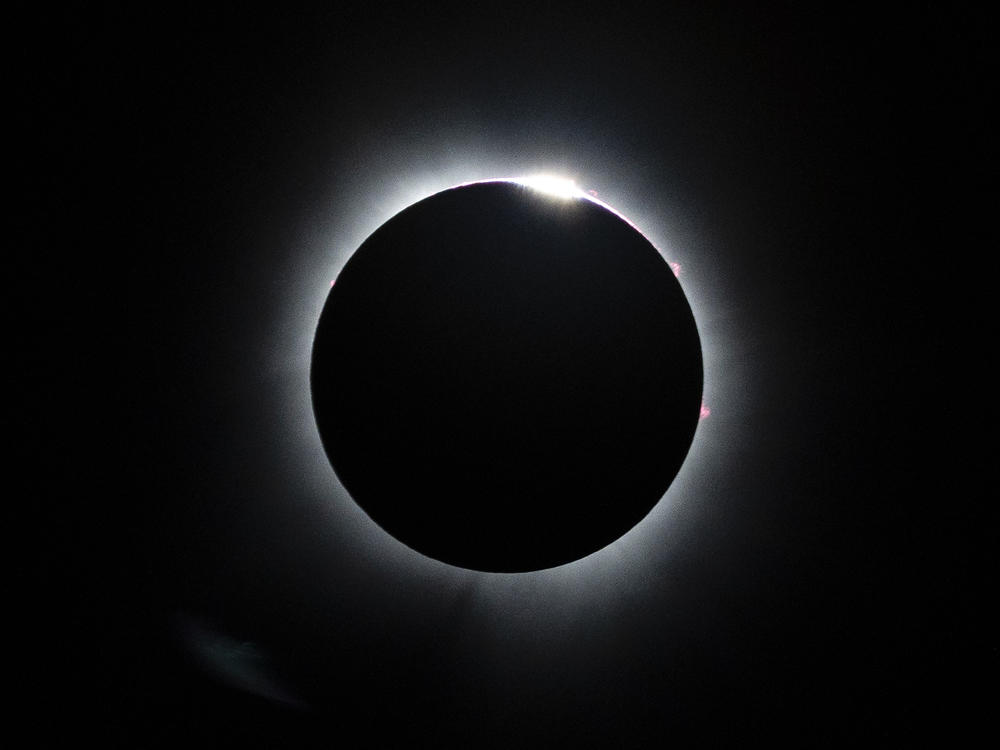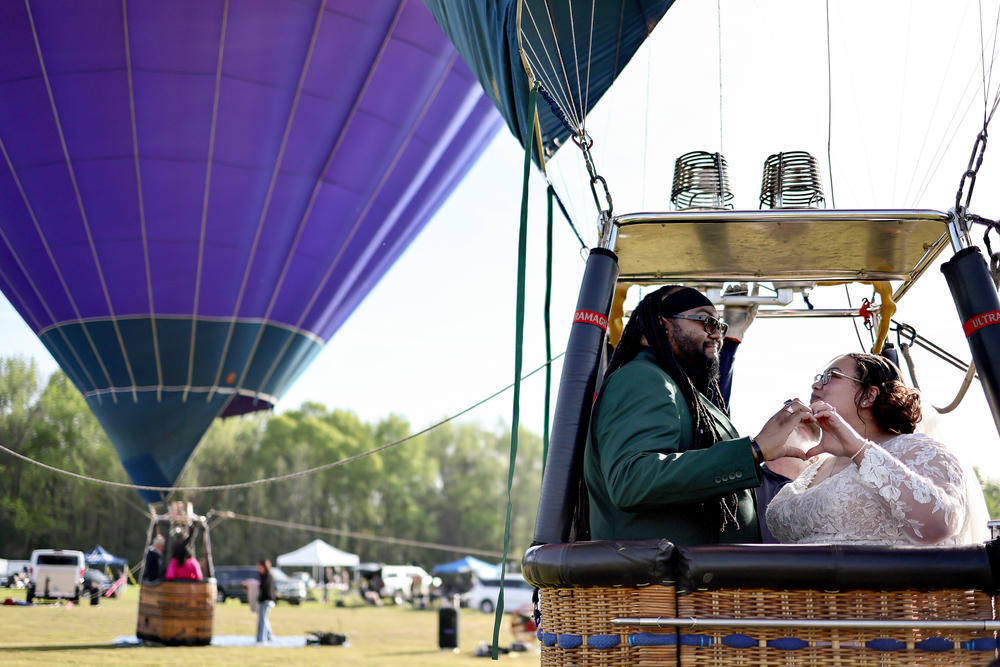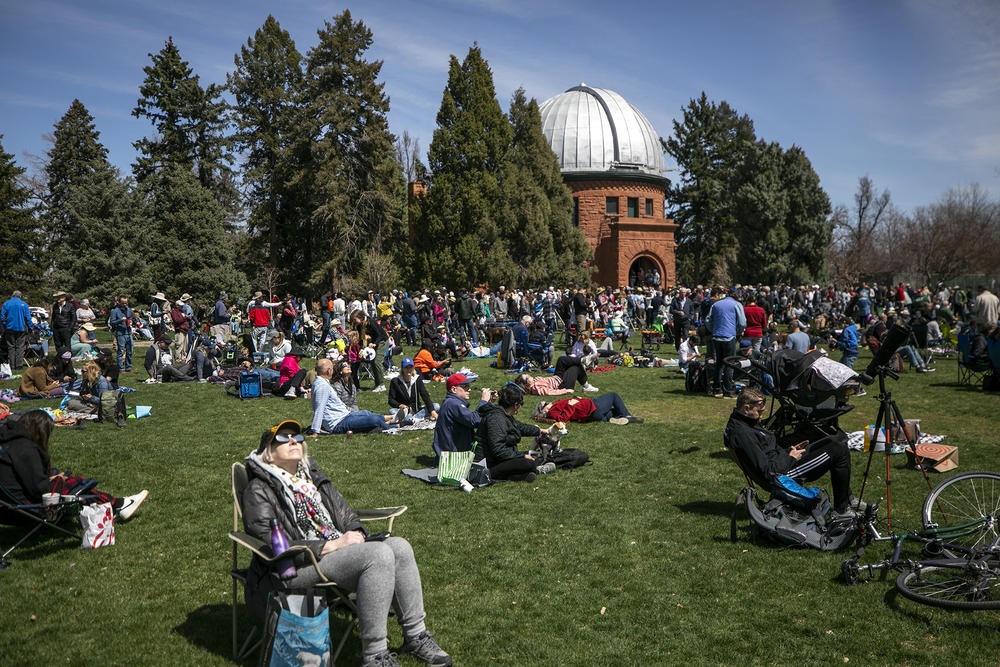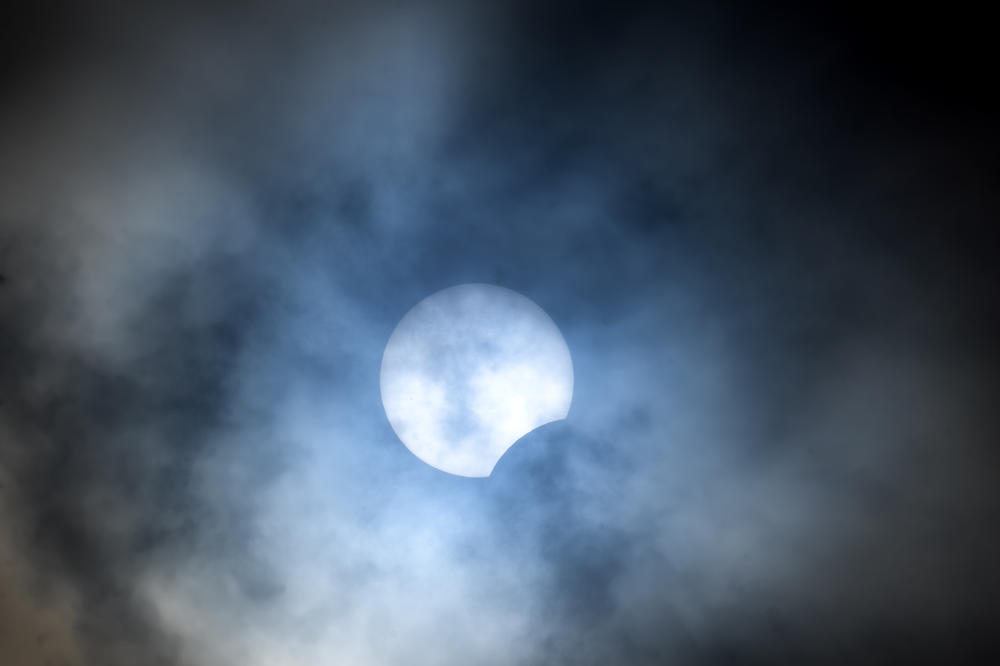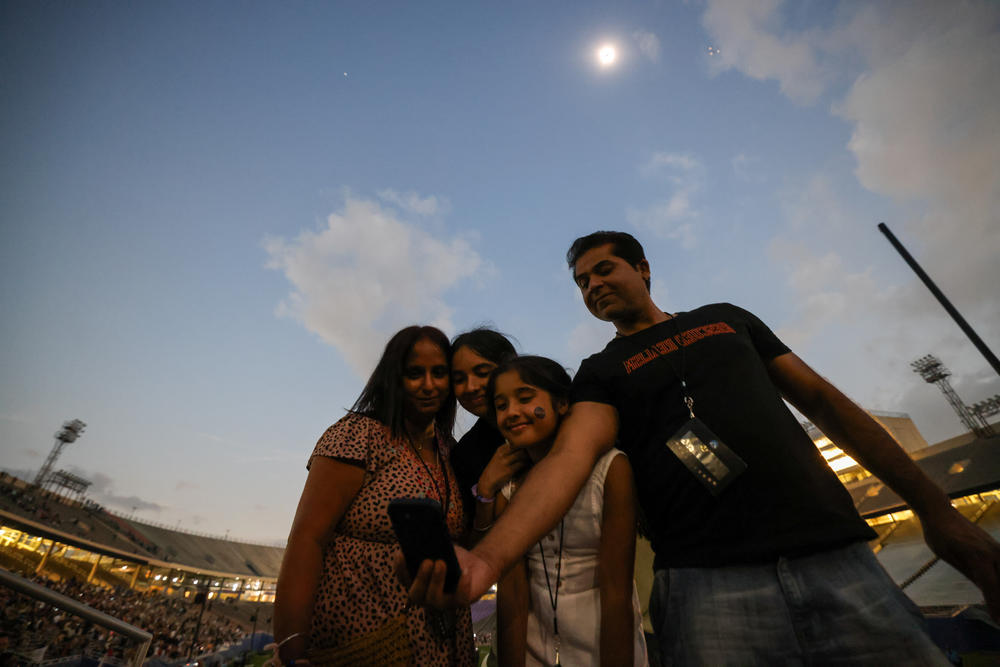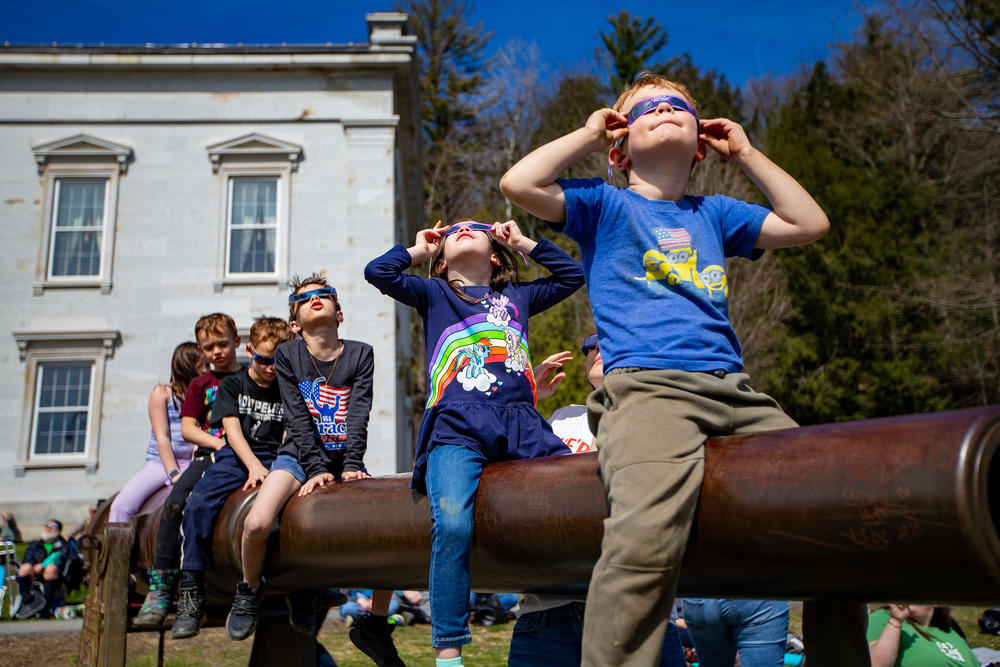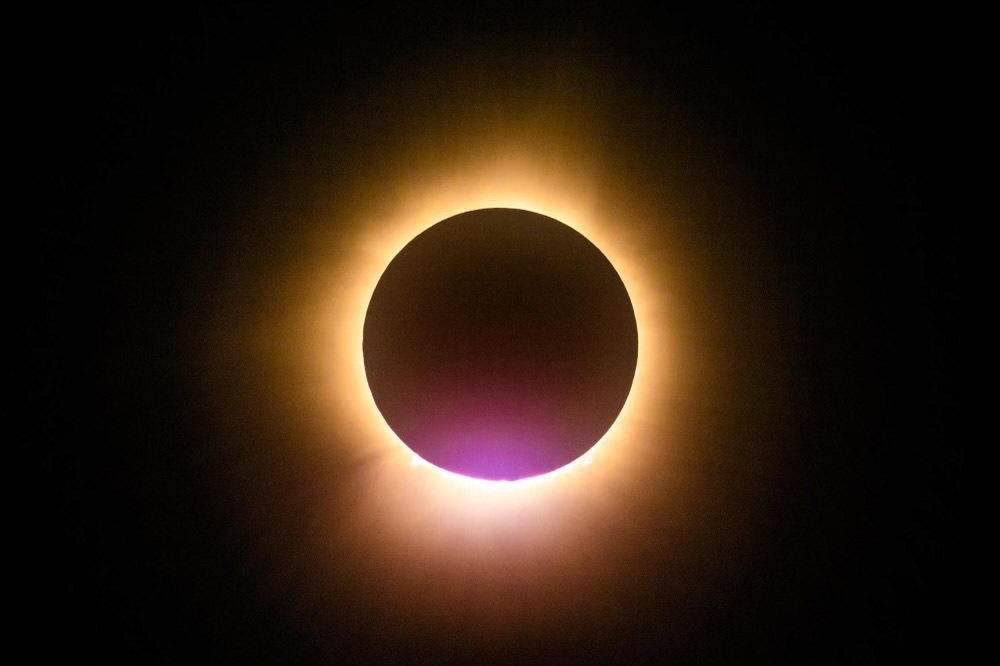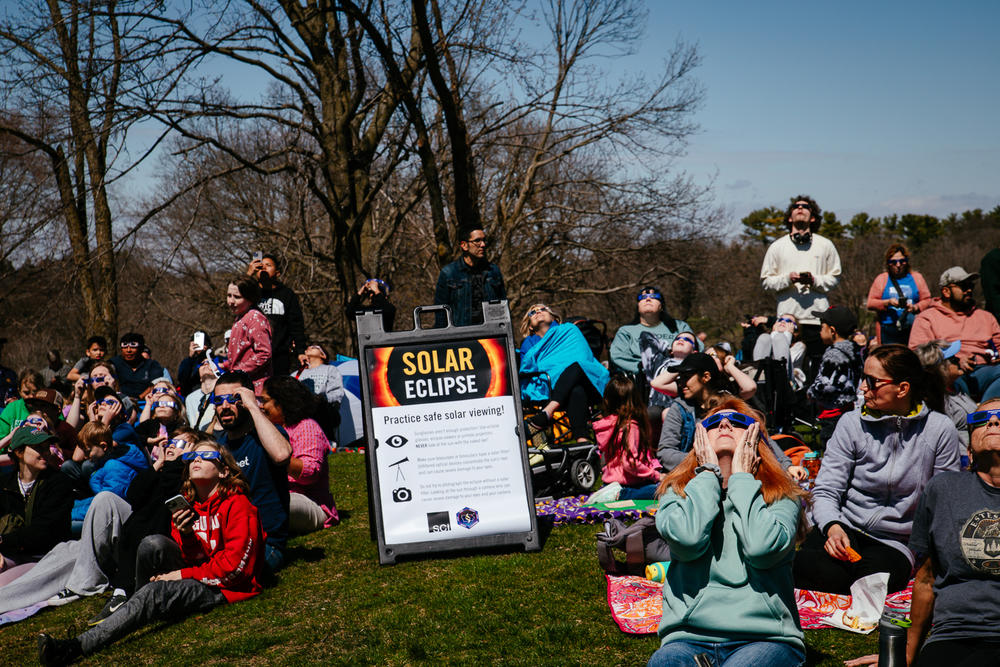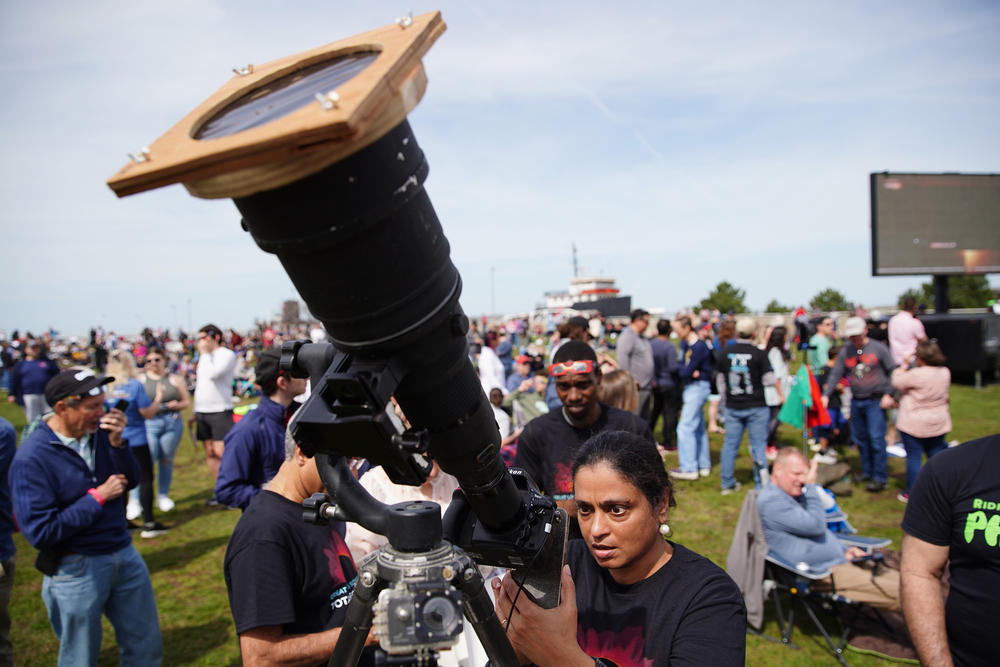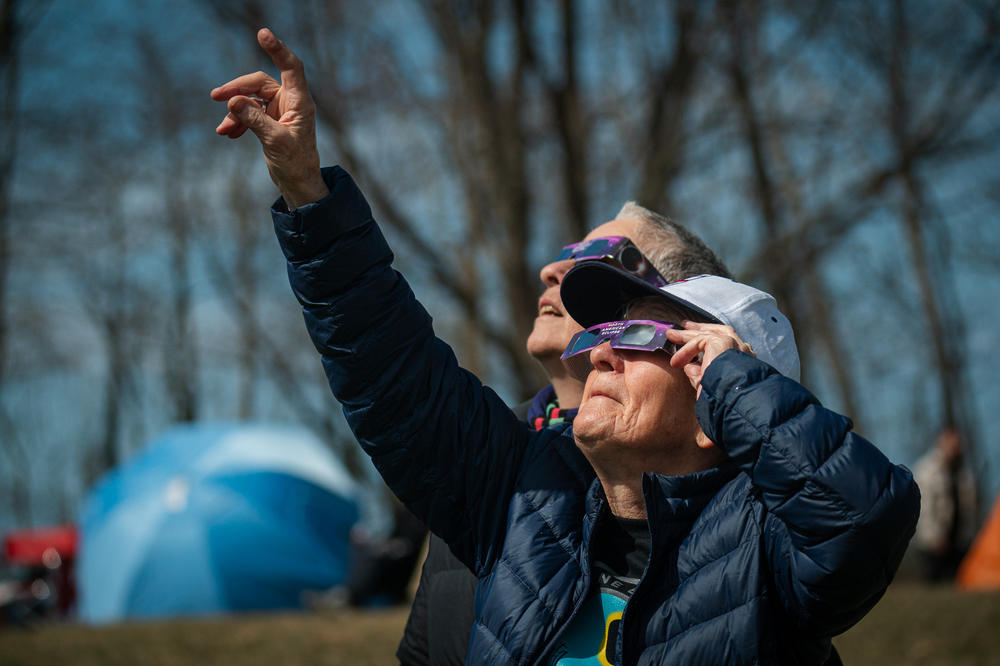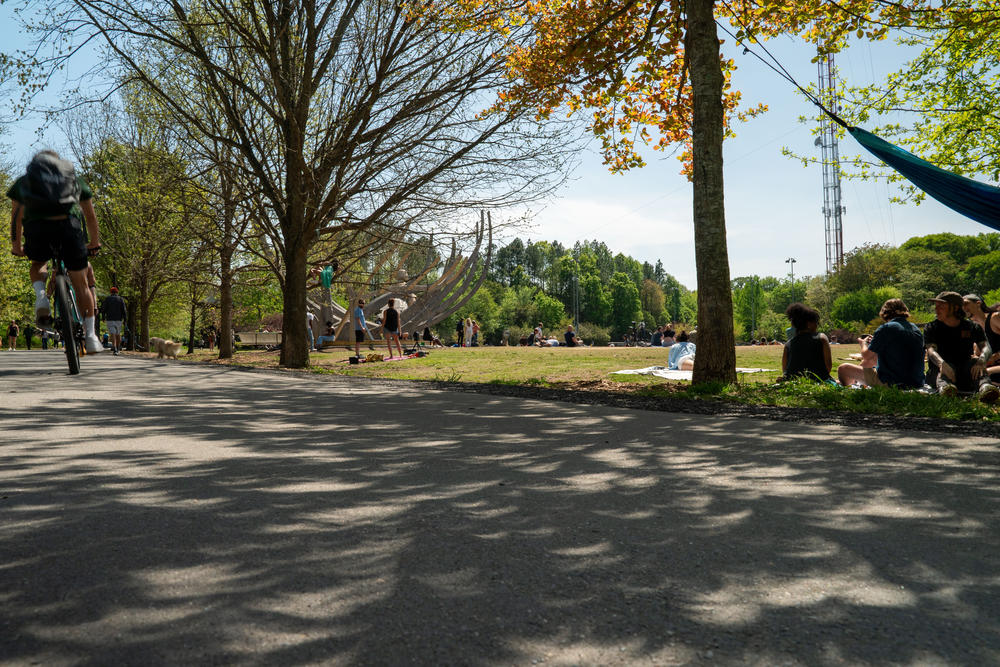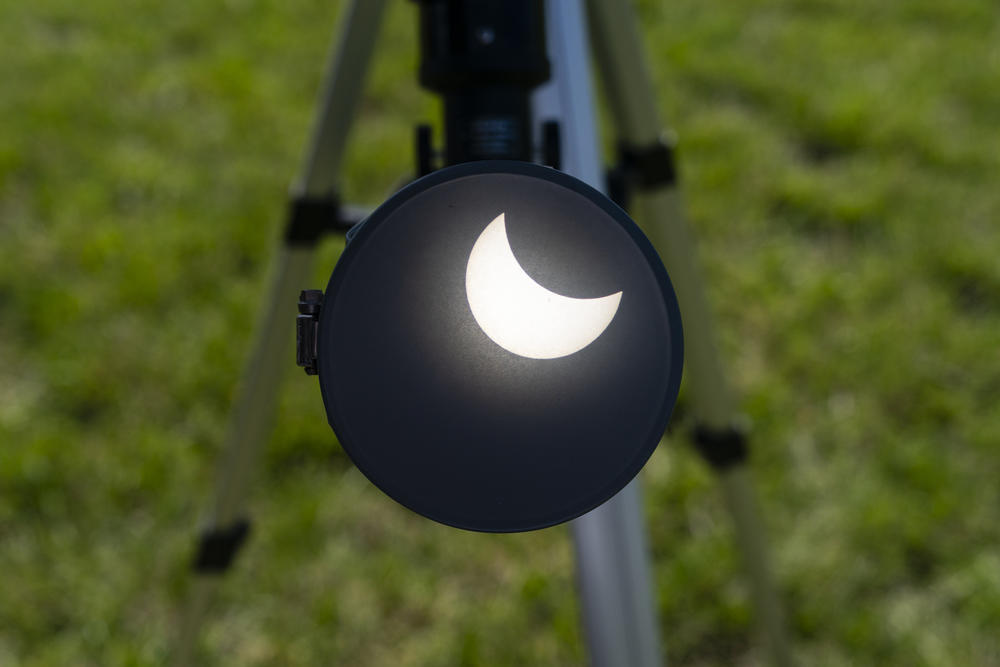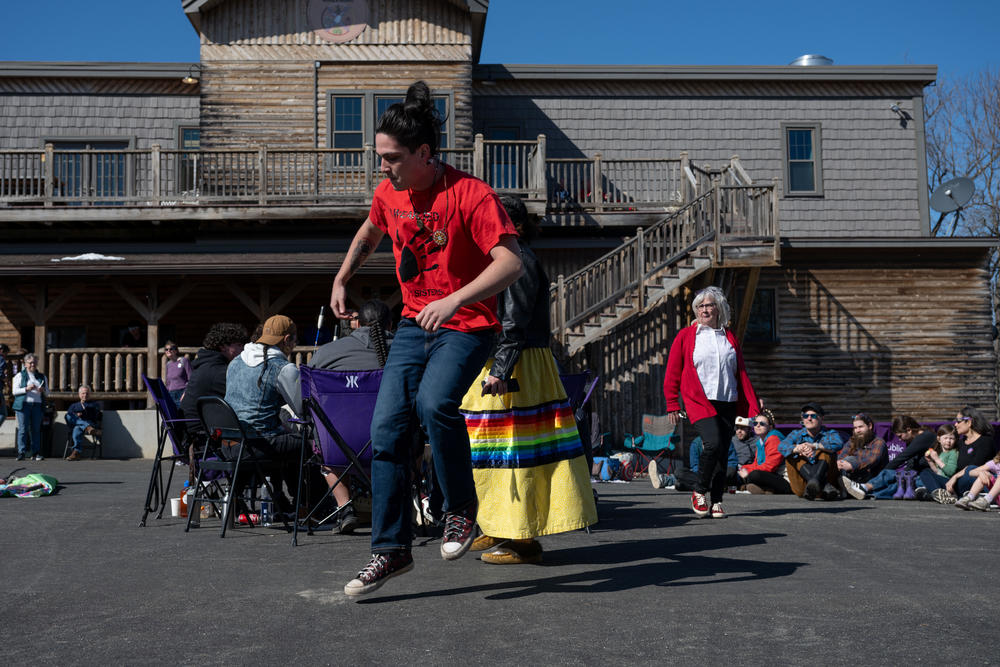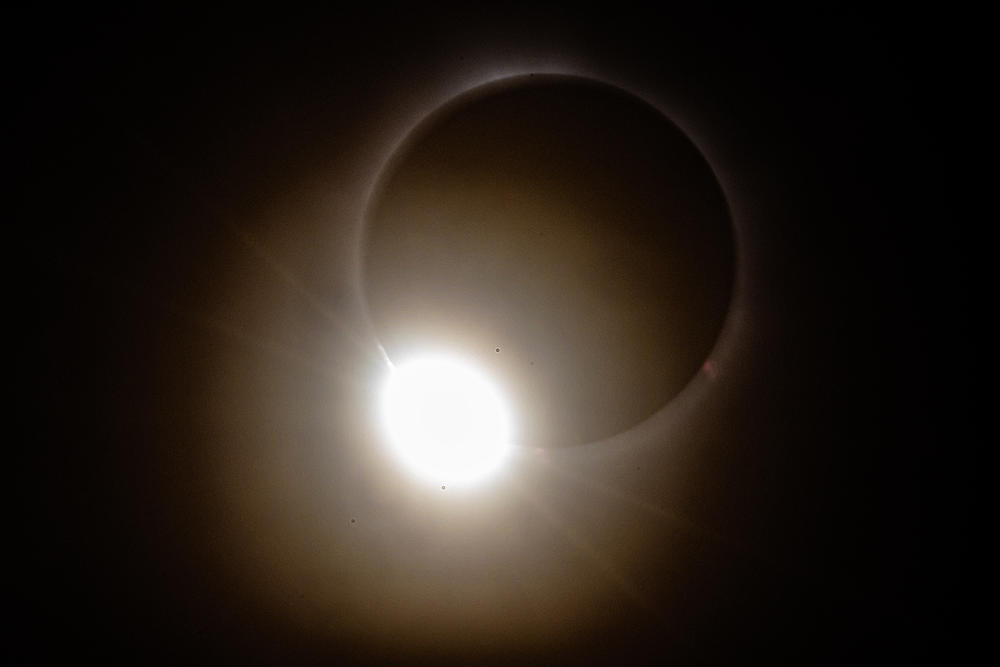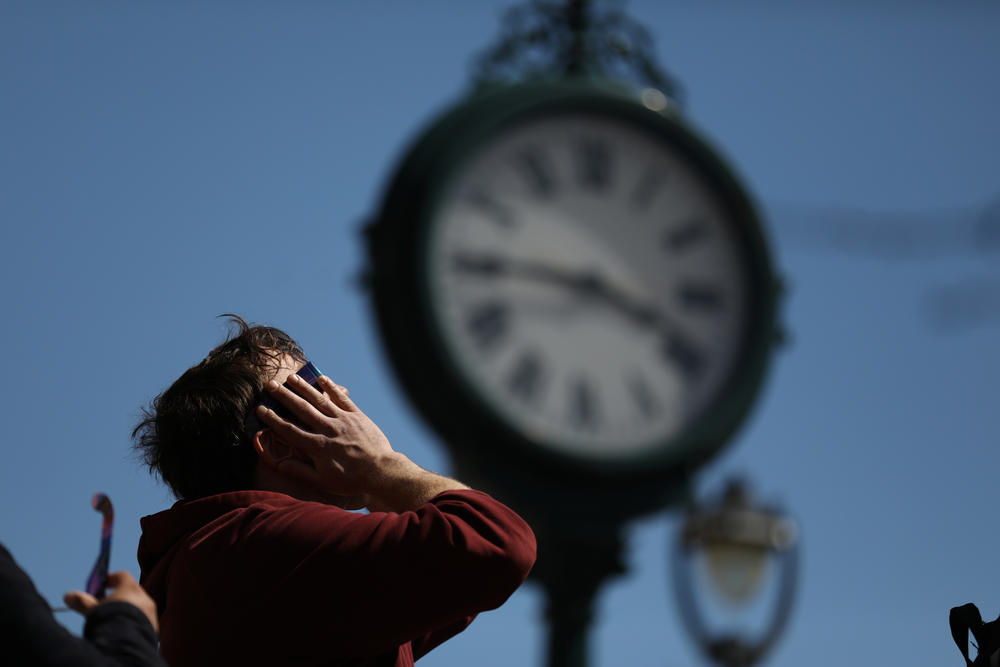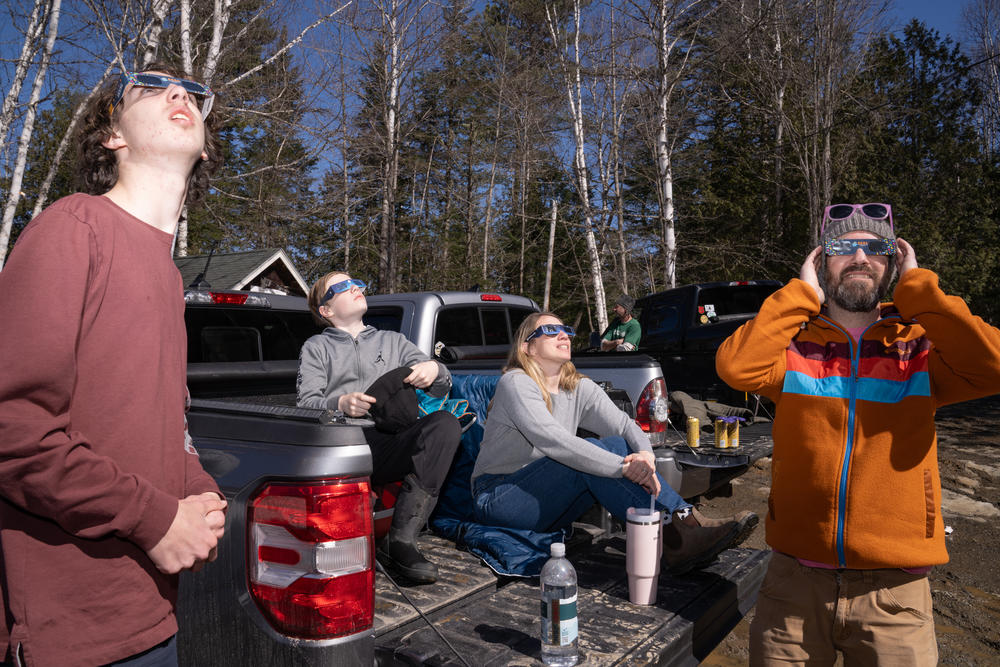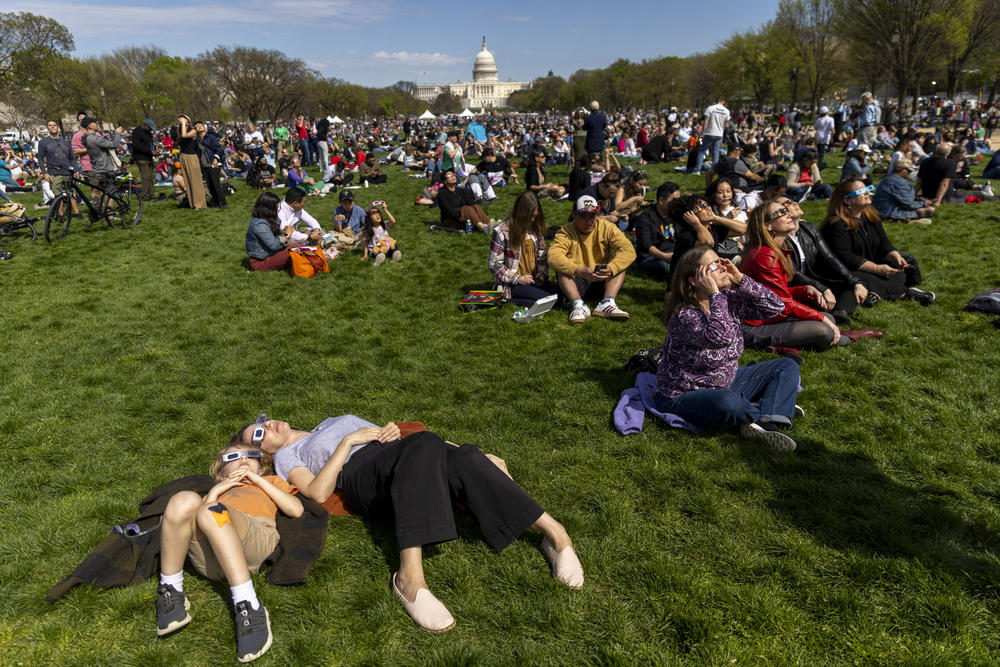Section Branding
Header Content
A rare solar eclipse darkened skies and dazzled viewers across the U.S.
Primary Content
A rare solar eclipse swept across parts of the U.S. on Monday, leaving considerable awe, mesmerizing photographs and scores of paper sunglasses in its wake.
It first appeared along Mexico's Pacific Coast just after 11 a.m. PT before crossing into Texas as a partial eclipse, progressing to totality around 1:30 p.m. CT.
It made its way north over the next several hours, bringing brief moments — no more than five minutes' worth — of daytime darkness to areas in the over 100-mile wide path of totality.
The eclipse crossed through parts of 15 states, with totality ending in Maine just after 3:30 p.m. ET. It continued from there into Canada, exiting shortly after 5:15 p.m. — and marking the last glimpse of a total solar eclipse that the contiguous U.S. will see until August 2044.
Americans traveled, braving traffic and crowds
Over 30 million Americans live within the path of totality, according to NASA — and many more traveled, either across town or out of state, for peak eclipse viewing.
Many communities in the path had long been preparing for the eclipse, the first in the U.S. since 2017.
Officials in Houlton, Maine — the last U.S. city in the eclipse's path — spent over two years planning days of festivities. So did Muncie, Ind., where one museum official told NPR the city was expecting some 100,000 visitors — nearly doubling the population.
In the days leading up to the eclipse, the governors of Arkansas and Indiana and leaders in several counties and cities across the eclipse's path declared states of emergency to make more resources available to deal with the influx of visitors.
Monday morning saw roads snarled with traffic and parking lots packed to capacity, according to NPR stations.
In Vermont — which was bracing for some 160,000 visitors — municipal garages in Burlington were full by 11 a.m. ET, more than four hours ahead of totality. Newport mayor Linda Joy Sullivan told Vermont Edition that visitors were coming from all over the world, including in 90 private planes.
Cleveland dispatched traffic officers across the city to facilitate movement on the roads, flooded with cars both for the eclipse and the Cleveland Guardians' home opener.
Across the path of totality, viewers gathered at parks, science centers, schools and other community centers to take in the scene. They could be seen craning their necks and heard clapping and cheering as the sky darkened.
Loading...
Cloudy weather didn't dampen spirits
Forecasters have spent days trying to pinpoint how potential rainy or cloudy weather could put a damper on eclipse viewing and warning of possible storms in Texas and other places.
The National Weather Service confirmed midday Monday that cloud coverage would impact the view throughout much of the path of totality, though the clouds would be high enough in certain areas — largely in New England — to not obscure it completely.
The forecast saw some people pivot to backup plans — like Monica and Prashant Joshi and their son Ved, of New Jersey, who rebooked their flights from Dallas to Vermont last week.
But many others still flocked to North and Central Texas, which had some of the longest totality times in the country and were expected to draw up to a million travelers — and a sizable corresponding boom in business. Clouds didn't stop crowds from forming — and buying eclipse-themed merchandise — in Dallas.
The eclipse isn't the only thing the National Weather Service was watching on Monday. It said dangerous storms were expected to develop around and after the eclipse across a large portion of Texas, south Oklahoma, southwest Arkansas and Louisiana.
Those storms were forecast to bring large hail, damaging winds and tornado threats to the area, adding another potential complication to many peoples' post-eclipse travel.
The U.S. will have to wait two decades for another total solar eclipse
The next total solar eclipse will be visible in Greenland, Iceland, Spain, Russia and part of Portugal in August 2026, according to NASA.
But North America will have to wait another 20 years for its turn. The next total solar eclipse forecast to be visible from the continent isn't until August 2044 — and that one is expected to only touch North Dakota, South Dakota and Montana.
The following year will see another total solar eclipse across much more of the country. It is expected to happen on Aug. 12, 2045, and span from California to Florida.
